Programme Overviews
Plenary Speakers ---- Symposia List ---- Symposia & Oral Sessions ---- Poster Sessions
![]() <--- Guidelines for presenters.
<--- Guidelines for presenters. ![]() Program Book (online version).
Program Book (online version).
Please read it carefully and prepare your presentation file by the deadline. Check the list and visit to the session that you find it interesting. We cover a wide range of subjects that will contribute to understanding of the latest issues of ornithology.
![]() Symposia & Oral sessions.
Symposia & Oral sessions. ![]() Poster sessions.
Poster sessions.
Plenary Speakers
Plenary lectures will be given in the morning (8:30-9:30) and the afternoon (13:30-14:30) during the conference. These introductions of the speakers are listed in the order of talk.
Unravelling migration: routes to genes.
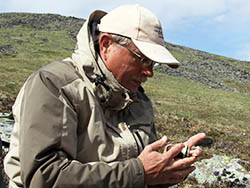 Franz Bairlein (Institute of Avian Research, Germany; Presidential address)
Franz Bairlein (Institute of Avian Research, Germany; Presidential address)
The annual migrations of birds fascinate man since thousands of years, and so I am. After studying biology, chemistry and physics at university I got taken by migratory birds, and since then I am studying various aspects of bird migration ranging from expeditions to the Sahara in order to unravel the mystery of long-distance trans-desert migrations, from several visits to tropical Africa where we are studying wintering ecology of Palearctic-African migrants, from work in the high Arctic to the study of the endogenous control of the migratory behavior with special emphasis on the nutrition, physiological and genomic background of migratory fueling. After many years with European warblers, my current model species is the northern wheatear, a cross-hemispheric long-distance songbird migrant, with a fascinating range of different population-specific migratory traits. Since 1990, I have been Director of the Institute of Avian Research in Germany, prior to being at the today max-Planck-Institute of Ornithology, and the University of Cologne. My plenary talk will summarize our integrative approach in studying the control of bird migration ranging from field to captive studies.
Evolution of song complexity in Bengalese finches might mirror the emergence of human language.
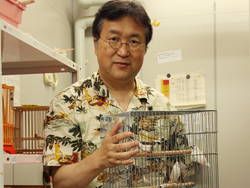 Kazuo Okanoya (The University of Tokyo / RIKEN , Japan)
Kazuo Okanoya (The University of Tokyo / RIKEN , Japan)
You may wonder what is "Birdsong Linguistics". But birdsong is now attracting a lot of attentions from researchers interested in the origin of language. I will talk about how studies in birdsong could contribute in such remote areas from ornithology. Or stated in other words, I will talk about how ornithology could contribute for the understand of human nature!
Beyond the long list, or four things we (should) know about bird invasions.
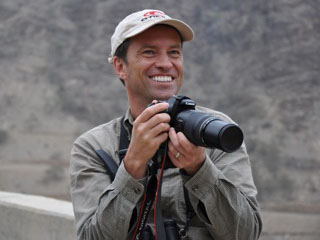 Tim Blackburn (Zoological Society of London, UK)
Tim Blackburn (Zoological Society of London, UK)
I am a research-active scientist with interests in a range of topics in ecology. My work in the 1990s with Kevin Gaston helped to define the newly emerging field of macroecology, most notably with our 2000 monograph on the subject (Pattern and Process in Macroecology). Since 2000, my research has largely focused on understanding the processes driving human-mediated biological invasions, using birds as a model taxon. My work helped to advance this field by applying phylogenetically and taxonomically explicit comparative analytical approaches from macroecology to a stage-based model of the invasion process, to identify the key factors determining which species become invasive. This work to 2009 was summarised in a monograph co-authored by Julie Lockwood and Phill Cassey and published by OUP (Avian Invasions: The ecology and evolution of exotic birds), but I continue to research and publish studies on invasions, as well as macroecology, extinction and life history. Since 2007, I have been Director of the Institute of Zoology in London.
Return to the Malay Archipelago: the biogeography of Bornean birds.
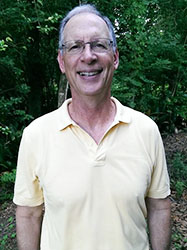
Frederick H. Sheldon (Louisiana State University, USA)
My first trip to Borneo was in 1976 as a collector for Charles Sibley, the DNA-hybridization guy. I liked it so much that I went back with my wife and lived there for three years in the early ‘80s. Unfortunately, my career thereafter as a molecular systematist tied me in a lab for about 20 years, and I rarely saw a living bird. Then, about 12 years ago, with old age rapidly approaching, I decided that since I liked Borneo so much, I should spend the rest of my days learning everything I can about its birds. To this end, I partnered with former LSU grad students Rob Moyle (a systematist at U. Kansas) and Alison Styring (an ecologist at Evergreen College) and began visiting Sabah and Sarawak in Malaysian Borneo every year. Together with folks at Sabah Parks, Sabah Museum, and the Universiti Malaysia Sarawak, we have learned a lot about bird evolution and ecology. Now, if I can only eke out another 20 or 30 years of field work, everything about the biogeography of Bornean birds will come clear.
Resource selection by parrots: challenges to identifying limiting factors.
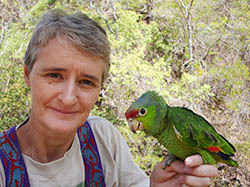 Katherine Renton (Instituto de Biología, Universidad Nacional Autónoma de México, Mexico)
Katherine Renton (Instituto de Biología, Universidad Nacional Autónoma de México, Mexico)
I have been conducting field research on the ecology of parrots and macaws in tropical dry and moist forests of Central and South America for over 25 years. Parrots are among the best-loved bird families having a long association with human societies, yet we know little of the ecology of many species. In this talk I focus on our limited understanding of resource selection of nest-sites, food, and habitat by parrots, as well as their area requirements. Through the results of my research I demonstrate that adaptive nest-site selection by a secondary cavity-nesting parrot predicts nest success. I also explore the ecological function of parrots as pre-dispersal seed predators that can influence recruitment patterns of canopy trees in tropical forests. Finally, I evaluate how habitat selection and area requirements of parrots demonstrate the importance of developing ecological connectivity for maintaining functional ecosystems. I hope my talk encourages studies on resource selection by parrots to define limiting factors for wild populations, and indicate the characteristics that make species vulnerable to human pressures.
Perspectives on the functional design of the avian respiratory system.
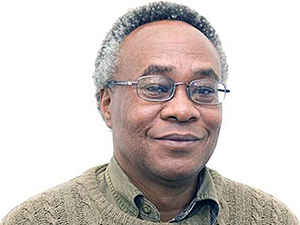 John N. Maina (University of Johannesburg, South Africa)
John N. Maina (University of Johannesburg, South Africa)
In biology, the avian respiratory apparatus, the lung-air sac system, has been highly ranked among the most controversial organ-systems. Although from documented evidence it has been continuously studied for about four-and-half centuries, it remains stubbornly intractable. Among the air-breathing vertebrates, structurally and functionally, the respiratory system is an exceptional gas exchanger. For the most part, its superior efficiency allowed birds to achieve volancy, a locomotory lifestyle which lead to their remarkable adaptive radiation. I have investigated the structure and function of the avian lungs for about the last three decades. Foremost, I have explicated the definite specializations which place it at the pinnacle of biological structural refinement. In my presentation, I will outline the development, structure, and function of the avian lung and particularly highlight those aspects which are still enigmatic.
The Paleontology of Now: Hawaii’s birds in the Anthropocene.
 Helen James (Smithsonian National Museum of Natural History, USA)
Helen James (Smithsonian National Museum of Natural History, USA)
She was in a lava cave on Maui collecting bones of extinct flightless birds that had fallen into the cave hundreds of years ago. They spotted a bone that made them change our thinking about this strange bird. The bone was a specialized structure that forms only in the windpipes of male ducks, not in true geese. When they obtained ancient DNA sequences from the fossils, we confirmed that these large, land-dwelling, flightless birds of Maui had evolved from a duck-like ancestor.
Darwin used observations about comparative anatomy, the fossil record, and the special animals that live on islands to support his theory about the origin of species. Their research on the flightless duck used the same general approach with the advantage of modern knowledge and technology.
[ Abbreviated by Ken Ishida from her webpage]
The East Asian Flyway - waterbirds in trouble.
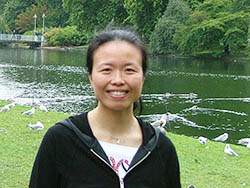 Cao Lei (Research Centre for Eco-Environmental Sciences of the Chinese Academy of Sciences, China)
Cao Lei (Research Centre for Eco-Environmental Sciences of the Chinese Academy of Sciences, China)
I am a Professor at to Research Centre for Eco-Environmental Sciences of the Chinese Academy of Sciences in Beijing where I study waterbirds and their environment, especially in the Yangtze River floodplain. I first became interested in shorebirds and the Anatidae ten years ago, when I took part in the WWF first synchronous waterbird survey of the Yangtze River floodplain. At that time I worked with Mark Barter to undertake comprehensive surveys of the key wetlands in eastern China for wintering waterbird to understand their numbers and distribution. Since then, through collaboration with scientists in Denmark, Russia and Australia, our group has broadened its interests to consider the serious environmental problems now facing the Yangtze River floodplain wetlands and our research work is focused on understanding the causes of these and their impact on waterbirds.
For many years, our group was based at the University of Science and Technology of China in Hefei, but in late 2013, I moved to my present position, where I hope to do more research at the flyway level, to derive new knowledge about the magical migrations of waterbirds, to identify key threats in their annual life cycle, to safeguard sufficient wetlands to ensure their survival, by working with people in our flyway, and all around the world.
Speciation in seabirds: why are there so many species....and why aren’t there more?
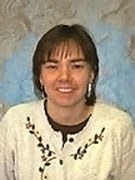 Vicki Friesen (Queen's University, Canada)
Vicki Friesen (Queen's University, Canada)
Understanding the extent to which local populations differ genetically has important implications for our understanding of ecology and evolution, as well as for conservation. For example, it affects the extent to which populations can adapt to local conditions, as well as their potential to form new species. Information on population genetic structure also is needed to define appropriate geographic units for conservation. However, human activities are altering the potential for local populations to diverge genetically and to adapt. My students and I study the factors that cause local populations of birds, primarily seabirds, to diverge, adapt and ultimately form new species. Next-generation sequence is providing especially exciting avenues for understanding these processes. I will present the highlights of our research, as well as key research from other groups. I will also share results of some preliminary meta-analyses, and discuss implications for conservation.
Conservation and monitoring of birds: a decision science approach.
 Hugh Possingham (The University of Queensland, Australia)
Hugh Possingham (The University of Queensland, Australia)
Aside from my day job, I have a variety of broader public roles advising policy makers and managers by sitting on 9 committees and boards outside the University including: The Wentworth Group of Concerned Scientists (founding member), Founding Editor of Conservation Letters (an international scientific journal), Council of the Australian Academy of Science (recently stepped down), and several Environmental NGO scientific advisory committees. I and Dr Barry Traill wrote “The Brigalow Declaration”, used by Premier Beattie to stop land clearing in Queensland thereby securing at least 2 billion tonnes of CO2 and saving an area the size of Portugal from conversion into farmland. However with a new Queensland government this success is under threat.
The Possingham lab developed the most widely used conservation planning software in the world. Marxan was used to underpin the rezoning of the Great Barrier Reef and is currently used in over 100 countries by over 3000 users – from the UK and USA to Madagascar and Brazil – to build the world’s marine and terrestrial landscape plans. Most recently Marxan was used to develop the biggest marine reserve system in the world – Australia’s federal marine reserve system. I coauthored two scientific consensus statements that lead to Australia’s marine reserve system. Many governments and ENGOs use my lab’s work for the allocation of funding to threatened species recovery and solving other conservation conundrums.
I have coauthored 389 refereed publications covered by the Web of Science (26 in Science, Nature or PNAS) and has more than 12,000 Web of Science citations. A Google Scholar profile can be found at http://scholar.google.com.au/citations?user=9-veEp8AAAAJ&hl=en. I currently directs two research centres, each of about $15 million, and I have supervised (or is supervising) 53 PhD students and 42 postdoctoral fellows.
I have one psychological disorder, a compulsive desire to watch birds.
Symposia
Symposia outlines are listed below. ![]() Download PDF for more details.
Download PDF for more details.
| # | Convenors | Title |
|---|---|---|
| S1 | Dieter Thomas Tietze & Yue-Hua Sun | The avifauna of the Sino-Himalayas: history, ecology, (no?) future. |
| S2 | Chris Elphick & Tatsuya Amano | Rice fields as a model system for studying bird ecology and conservation. |
| S3 | Bart Kempenaers & Caren Cooper | Light in the darkness: how does artificial night lighting influence bird behaviour and ecology? |
| S4 | Augusto João Piratelli & Ian MacGregor-Fors | Birds and agroecosystems: experiences from the tropics. |
| S5 | Mike Perrin & Jörn Theuerkauf | Recent advances in the study of Psittaciformes: breeding biology, population ecology and phylogeography. |
| S6 | Nagata Hisashi & Phillip Seddon | Avian reintroductions in changing environments. |
| S7 | Keita D. Tanaka & Martin Stevens | To understand what birds actually see: toward a newer synthesis of visual perception and methods to study coloration. |
| S8 | Daniel G. Wenny & Kayoko Kameda | Why Birds Matter: Birds’ Ecological Functions, Ecosystem Services, and Value to Society. |
| S9 | Dinesh Bhatt & Maria Luisa da Silva | Vocal communication and vocal control in sub-oscine passerines. |
| S10 | Cas Eikenaar & Leonida Fusani | Physiological factors influencing migratory strategies. |
| S11 | N. Suzanne Dauphiné & Christopher A. Lepczyk | Invasive species and Pacific island bird conservation. |
| S12 | Yutaka Watanuki & Julia Clarke | Evolution and behavioral adaptation of waterbirds flying in the air and in the water. |
| S13 | Knud A. Jønsson & Anders P. Tøttrup | Avian dispersal: Implications for speciation, community build-up and migration. |
| S14 | Scott A. MacDougall-Shackleton & Susan D. Healy | Neural plasticity and the waxing and waning of cognition in birds. |
| S15 | Indrikis Krams & Todd M. Freeberg | Social complexity, vocal communication and cooperation. |
| S16 | Jeffrey F. Kelly & Felix Liechti | Radar Aeroecology. |
| S17 | Isao Nishiumi & Bailey McKay | Avian Phylogeography in East Asia. |
| S20 | Juan Diego Ibáñez-Álamo & Robert L. Thomson | Avian nest predation: New perspectives. |
| S21 | Kazuyoshi Tsutsui & Barney A. Schlinger | Avian Neurosteroids: Biosynthesis and BiologicalAction. |
| S22 | Miriam Liedvogel & Dmitry Kishkinev | Sensory and molecular genetics mechanisms of migratory traits. |
| S23 | Fugo Takasu & Jin-Won Lee | Avian brood parasitism - novel findings and new puzzles. |
| S24 | Richard H. Loyn & Lluis Brotons | Fire regimes and bird population responses. |
| S25 | Kendra Sewall & Britt Heidinger | Developmental stress beyond bird song: Can early life stressors engineer physiology and behavior for harsh environments? |
| S26 | Roderick A. Suthers & Kazuo Okanoya | Plasticity in birdsong production. |
| S27 | Diederik Strubbe & Darius Stiels | Non-native birds as natural experiments: ecological and evolutionary change during biological invasions. |
| S28 | Sang-im Lee & Piotr Jablonski | Avian cognition in natural populations. |
| S29 | Ommo Hüppop & Nikita Chernetsov | The value of long-term ringing data in ornithology. |
| S30 | Asha Chandola-Saklani & Barbara Helm | Ecophysiology of Circannual and Long-term Timing Mechanisms: Recent Advances. |
| S31 | Niels Dingemanse & Pim Edelaar | Birds in space: is individual variation relevant? |
| S33 | Heiko Schmaljohann & Arseny Tsvey | Departure decisions in nocturnal migrants. |
| S34 | Keisuke Ueda & Anders Pape Møller | Effects of radiation on birds and other organisms: Chernobyl, Fukushima and beyond. |
| S35 | Peter H. Becker & Hugh Drummond Durey | Lifelong individual development as an important component of life history. |
| S36 | Alexandre Roulin & Andy T.D. Bennett | Colour polymorphisms. |
| S37 | Jon Fjeldså & Erich Jarvis | Genomes and the evolution of modern birds. |
| S38 | Andrei V. Zinoviev & Dominique G. Homberger | Evolutionary Morphology of Birds: New Methods and Concepts. |
| S39 | Andrew G. Gosler & Robert Gosford | Ethno-ornithology: Birds, Culture & Conservation. |
| S40 | Jutta Leyrer & Zhijun Ma | Turning the tide for East Asia’s migratory shorebirds. |
| S41 | Maris Strazds & Anders Bignert | Persistent organic pollutants - lasting problems and new aspects in migratory birds. |
| S42 | Scott McWilliams & William Buttemer | Nutritional satisfaction: new perspectives on how birds acquire necessary energy and nutrients. |
| S43 | Kirk C. Klasing & Kevin D. Matson | Ecological immunology at 30: a midlife crisis or newfound opportunity? |
| S44 | Gerald Mayr & Xu Xing | New finds and old bones – integrative palaeornithology for the 21st century. |
| S45 | Alice Cibois & Shao-Hsien Li | Avian phylogenetics: advances in understanding of Old World passerine evolution. |
| S46 | Patricia L. R. Brennan & Richard O.Prum | Recent insights on sexual selection from avian models. |
| S47 | David Swanson & François Vézina | Patterns and mechanisms of metabolic flexibility in birds. |
| S48 | Marcel E. Visser & Tony D. Williams | Physiological mechanisms underlying individual variation in life-history traits |